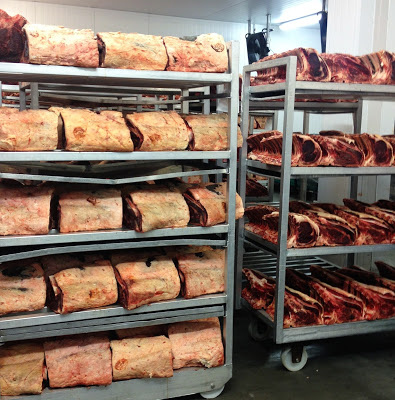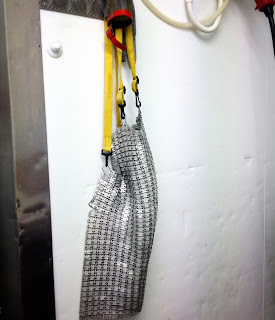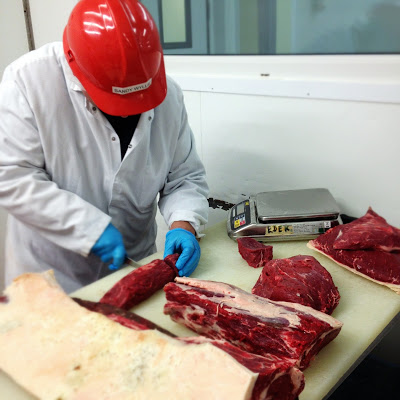I was very pleased to be invited by Donald Russell, to go to their HQ in Inverurie near Aberdeen, Scotland. Donald Russell, the Scottish butchers, was set up about
forty years ago when it only supplied the trading industry. As a butcher
they don’t just supply beef, but any meat you can think of including
poultry, fish, game, ready dishes, pasta, meal planner boxes and
speciality breads and quiches. Nowadays, their products are available to
buy online. You have a choice whether you have your order sent chilled
or frozen. They hold the Royal Warrant, supplying the Royal household. They supply many high-end luxury hotel and restaurants around the world as well.
I was very happy to discover that my companion in this adventure was the charming Ernest. It was a long day, we took an early flight which was about 1h30mins from Heathrow to Aberdeen. We were collected by the lovely Liz Webb, marketing executive and whom I have met before in London. She drove us for another 20 minutes to Donald Russell HQ. When we arrived we met Hans Baumann, the managing director and Stefan Kolsch, the head of NPD and Outsourced products. Stefan is responsible for all the photography and development of all recipes for the brand too. We heard about Donald Russell story including the ups and downs of animal health scares and diseases that plagued the 90’s. We had a good tour of the butchery: sourcing of beef, maturation and merits of freezing. We were shown the route from Intake to maturation, cutting line and portion which are done by hand by skillful butchers and the packaging area.
I was impressed by the amount of people working behind the scenes. On the tour we were told that all their animals are
of UK origin with 80% coming from Scotland farms using the highest
quality control, maturity. We slightly tapped on the current topic of provenance. Nowadays the consumer wants to know where the food comes from. We were told that they source their meat based on quality and not on breed. We were told that provenance of Donald Russell’s meat can traced to a farmer and a batch number but not a particular animal.
 |
| wet maturation – vacuum packed |
 |
| air-dry maturation area
|
Butchery Masterclass
  |
| butchering |
 |
| butchering, trimming and weighing the fine cuts |
 |
| Butchering lamb – valentine’s hand cut heart shaped I have tried this tender and juicy cut of lamb before – read about it here: Valentine Lamb |
It was a great day even if a bit cold the temperature is set quite low at the butchery to preserve the meat. I particularly enjoyed learning to cook at low temperature. Thanks to Wild Card and Donald Russell for organising the trip and for the nice hospitality.












